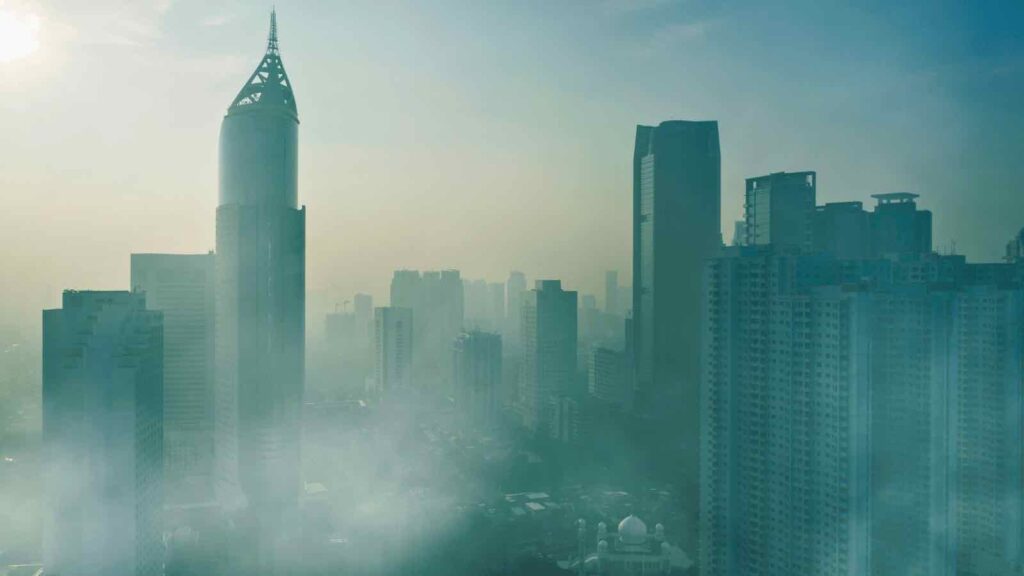Air pollution is the most pressing environmental health crisis in the world. It is responsible for more than 6.5 million deaths annually, the bulk of which – 70 per cent – occurs in Asia-Pacific.
The global community faces an imminent environmental health crisis as air pollution remains responsible for over 6.5 million fatalities each year. Alarmingly, the Asia-Pacific region witnesses 70% of these deaths, making it the primary hotspot for this pressing dilemma.
RELEVANT SUSTAINABLE GOALS



Poor Air Quality : The Impact Beyond Health
Aside from the significant health implications, this degraded air quality jeopardizes Asia-Pacific’s economy, climate stability, and food and water security. These challenges further impede the region’s pursuit of sustainable growth and poverty alleviation.
Leading pollutants in the region
Particulate matter
Particulate matter, or PM10 and PM2.5, are fine particles with a diameter of less than 10 and 2.5 micrometers, respectively. Exposure can cause cancer and are linked to respiratory and cardiovascular diseases
Sulfur Dioxide
A gas with a sharp smell, generated during the combustion of fossil fuels. In addition to the risk to human respiratory system, when combined with air and water, sulfur dioxide or SO2 can form acid rain.
Nitrogen Oxides
A primary ingredient in acid rain, this group of gasses is released by motor vehicles, industrial emissions, and forest fires. Exposure to nitrogen oxide, also known as NOx, may lead to asthma.
Volatile Organic Compounds
Both an indoor and outdoor pollutant, these compounds easily vaporize from solids and liquids such as paints, coatings, gasoline, other solvents, and the ozone depleting hydrofluorocarbons.
Short-lived Climate Pollutants
Short-lived climate pollutants are agents with relatively short lifetime that have both global warming influence and severe impact on air quality. Main pollutants are black carbon, methane and tropospheric ozone.
Tropospheric Ozone
Formed by reactions between nitrogen oxides and volatile organic compounds in the presence of sunlight, ground level ozone is the main contributor to smog and exposure to it can lead to development of asthma and death.
Black Carbon
Generated by incomplete combustion of fossil fuels and biomass, black carbon is a main component of PM2.5.
Methane
Produced mainly through decomposition agricultural waste, methane emission can lead to the creation of tropospheric ozone.
Hydrofluorocarbons
Used in air conditioners and refrigeration, solvents, foam blowing agents and aerosols, the climate warming impact of this greenhouse gas, also known as CFCs, is particularly strong.
Air pollution brought about by these pollutants is a common concern in countries and cities in Asia-Pacific. They pose a significant threat to human and environmental health particularly in developing countries.
You may also be interested in :
Calling Health Equity Champions : Apply For The Equity Initiative Fellowship 2024



